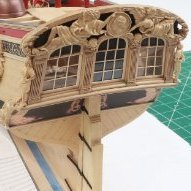HOLIDAY DONATION DRIVE - SUPPORT MSW - DO YOUR PART TO KEEP THIS GREAT FORUM GOING!
×
Group Prototype HMS Winchelsea - FINISHED - 1764 - by Chuck (1/4" scale)
-
Recently Browsing 0 members
- No registered users viewing this page.




Recommended Posts